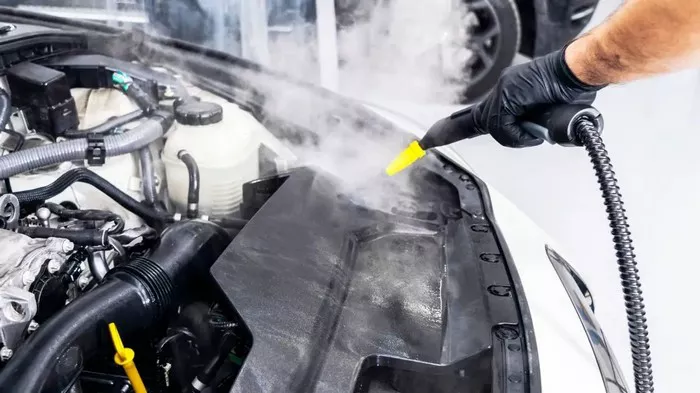Steam cleaners have revolutionized the way we approach cleanliness, offering a potent combination of efficiency and eco-friendliness. By harnessing the power of high-temperature steam, these devices are capable of dissolving dirt, grime, and grease without the need for harsh chemicals. At the core of their functionality lies water, making it the primary ingredient in their cleaning arsenal.
Purpose of Steam Cleaners
Steam cleaners are ingeniously designed to clean and sanitize surfaces using the formidable power of steam. Unlike traditional cleaning methods that rely on chemical solutions, steam cleaners utilize high-temperature steam to penetrate and lift stubborn stains and contaminants. This makes them ideal for a wide range of cleaning tasks, from disinfecting kitchen countertops to freshening up upholstery.
Water as a Primary Ingredient
At its essence, a steam cleaner is essentially a device that heats water to produce steam, which is then expelled through a nozzle or brush attachment to clean surfaces. The process is remarkably simple yet remarkably effective. As water is heated to boiling point within the machine, it transforms into steam, which, when directed onto a surface, effectively dissolves dirt and grime. This makes water the fundamental component of steam cleaning, showcasing its versatility and eco-friendliness.
Types of Steam Cleaners
Steam cleaners come in various shapes and sizes, each tailored to suit specific cleaning needs. Handheld steam cleaners offer portability and convenience, making them perfect for spot cleaning and tackling hard-to-reach areas. Steam mops, on the other hand, resemble traditional mop designs but utilize steam instead of water and detergent to clean floors effectively. Cylinder steam cleaners are larger and more powerful, suitable for deep cleaning tasks such as removing stubborn grime from tile grout or sanitizing mattresses. While the basic principle remains consistent across all types, the design and features may vary to accommodate different cleaning requirements.
Water Quality
While water is the primary ingredient in steam cleaning, not all water is created equal. The quality of water used in a steam cleaner can significantly impact its performance and longevity. Hard water, which contains high levels of minerals such as calcium and magnesium, can leave behind mineral deposits that may clog the machine’s components over time. To mitigate this risk, it is advisable to use distilled or demineralized water in steam cleaners. These types of water have had impurities removed, ensuring a smoother operation and prolonging the lifespan of the machine.
Additives and Enhancements
In some cases, users may wish to enhance the cleaning power of their steam cleaner by adding cleaning solutions or fragrances to the water reservoir. While this can be a useful option for tackling particularly tough stains or imparting a pleasant scent to freshly cleaned surfaces, it’s essential to proceed with caution. Not all steam cleaners are designed to accommodate additives, and using the wrong type of solution can damage the machine or void its warranty. Always consult the manufacturer’s recommendations regarding the use of additives and follow instructions diligently to avoid any potential mishaps.
Safety Precautions
When using a steam cleaner, safety should always be a top priority. The high temperatures involved in steam cleaning can pose risks if proper precautions are not taken. Wear protective gloves and eyewear to shield yourself from hot steam and any potential splashes. Keep children and pets away from the area being cleaned to prevent accidents, and ensure adequate ventilation to dissipate steam and prevent the buildup of moisture indoors.
Maintenance
To keep your steam cleaner in peak condition, regular maintenance is key. Empty and clean the water tank after each use to prevent the growth of mold and bacteria. Descaling the machine periodically is also essential, especially if you live in an area with hard water. Follow the manufacturer’s instructions for descaling procedures to ensure optimal performance and longevity. Additionally, store the steam cleaner in a dry, well-ventilated area to prevent mold and mildew growth and prolong its lifespan.
Environmental Impact
One of the most significant advantages of steam cleaning is its eco-friendliness. By eliminating the need for chemical cleaners, steam cleaners help reduce the environmental impact of cleaning activities. This not only benefits the planet but also contributes to a healthier indoor environment by minimizing exposure to potentially harmful substances. With sustainability becoming an increasingly important consideration for consumers, steam cleaning offers a compelling solution for maintaining cleanliness without compromising environmental responsibility.
Versatility
One of the standout features of steam cleaners is their versatility. From floors to countertops, tiles to upholstery, and even clothing, steam cleaners can tackle a wide range of surfaces with ease. The high-temperature steam effectively dissolves dirt and grime, leaving surfaces sanitized and refreshed without the need for multiple cleaning products. This versatility makes steam cleaners a valuable addition to any household cleaning arsenal, offering efficiency and convenience for a variety of tasks.
Conclusion
In conclusion, water is indeed the primary ingredient used in steam cleaners, powering their ability to clean and sanitize surfaces effectively. However, to ensure optimal performance and longevity, it’s essential to follow manufacturer instructions regarding water quality and any additional additives. By harnessing the power of steam, these versatile devices offer a greener, more efficient alternative to traditional cleaning methods. Whether tackling tough stains or simply maintaining a clean home, steam cleaners provide a convenient and eco-friendly solution for all your cleaning needs. Explore the specific features and capabilities of your steam cleaner model to unlock its full potential and enjoy sparkling clean surfaces with ease.

